Doctor en Ciencia Animal, con énfasis en genética cuantitativa y modelación. Formación profesional en Zootecnia. Profesor Investigador del grupo de investigación Ciencia Animal en la Facultad de Ciencias Agropecuarias de la Universidad de Ciencias Aplicadas y Ambientales U.D.C.A. Investigación en metodologías de genética cuantitativa, de poblaciones y el uso de información genómica para programas de mejoramiento genético de especies domésticas, principalmente en bovinos, peces y especies menores. Dirección de proyectos de investigación a escala nacional con la participación de instituciones educativas y de investigación como la Universidad Nacional de Colombia, Universidad de Antioquia, Universidad de Massey (Nueva Zelanda) y la Corporación Colombiana de Investigación Agropecuaria AGROSAVIA. Consultoría y asesoría a la asociación de criadores de ganado Simmental y Simbrah de Colombia (Asosimmental) a través de análisis de variabilidad genética, patrones de ancestría, evaluación genética con inclusión de información genómica y el desarrollo de índices de selección soportado en metodologías bioeconómicas para optimizar el progreso genético y económico de características asociadas a producción de carne y leche.
GRUPOS DE INVESTIGACIÓN: CIENCIA ANIMAL
LÍNEAS DE INVESTIGACIÓN: Salud Humana y Animal y Sostenibilidad Ambiental
LINEAS DE TRABAJO: Genética Cuantitativa, Modelación y Estadística, Selección Genómica, Genética de Poblaciones.
PRODUCTOS DESTACADOS
Economic utility of Colombian Romosinuano cattle
Fecha de publicación: 31/07/2024
El objetivo de este estudio fue cuantificar la utilidad económica en los sistemas de producción de Romosinuano mediante el desarrollo de un modelo bioeconómico asumiendo operaciones vaca-cría, vaca-cría más engorde (CCPS) y ciclo completo. Cada sistema produjo machos para venta y hembras para reemplazo. Los parámetros de entrada se establecieron a partir de datos recopilados por AGROSAVIA. Los ingresos se estimaron utilizando el precio oficial del ganado y los costos de producción se cuantificaron por actividad. En los resultados, para las operaciones vaca-cría, la utilidad económica máxima fue de 244,12 USD. CCPS, rindió 231,86 USD, y Ciclo completo, 268,94 USD. El progreso genético por generación para W240, W480, W24 y CI fue de +3,8 kg, +5 kg, +5,9 kg y -1 d, respectivamente. El precio del ganado fue la variable sensibilizada con mayor impacto sobre la utilidad económica máxima (± 118.64 USD a ± 155.44 USD), seguida de la suplementación mineral (16.31 USD a ± 37.34 USD). Las variables sensibilizadas con menor impacto fueron la alimentación (± 1.62 USD a ± 1.8 USD) y los insumos del plan de salud (± 6.03 USD a ± 9.13 USD). Se concluye que la utilidad económica definida como una carcaterística compuesta influenciada por las características que lo conforman favorece el progreso genético y la identificación de animales con desempeño óptimo en diferentes sistemas de producción bovina.
Más información ⇨
- 1
- 2
- 3
- …
- 11
- Siguiente »

